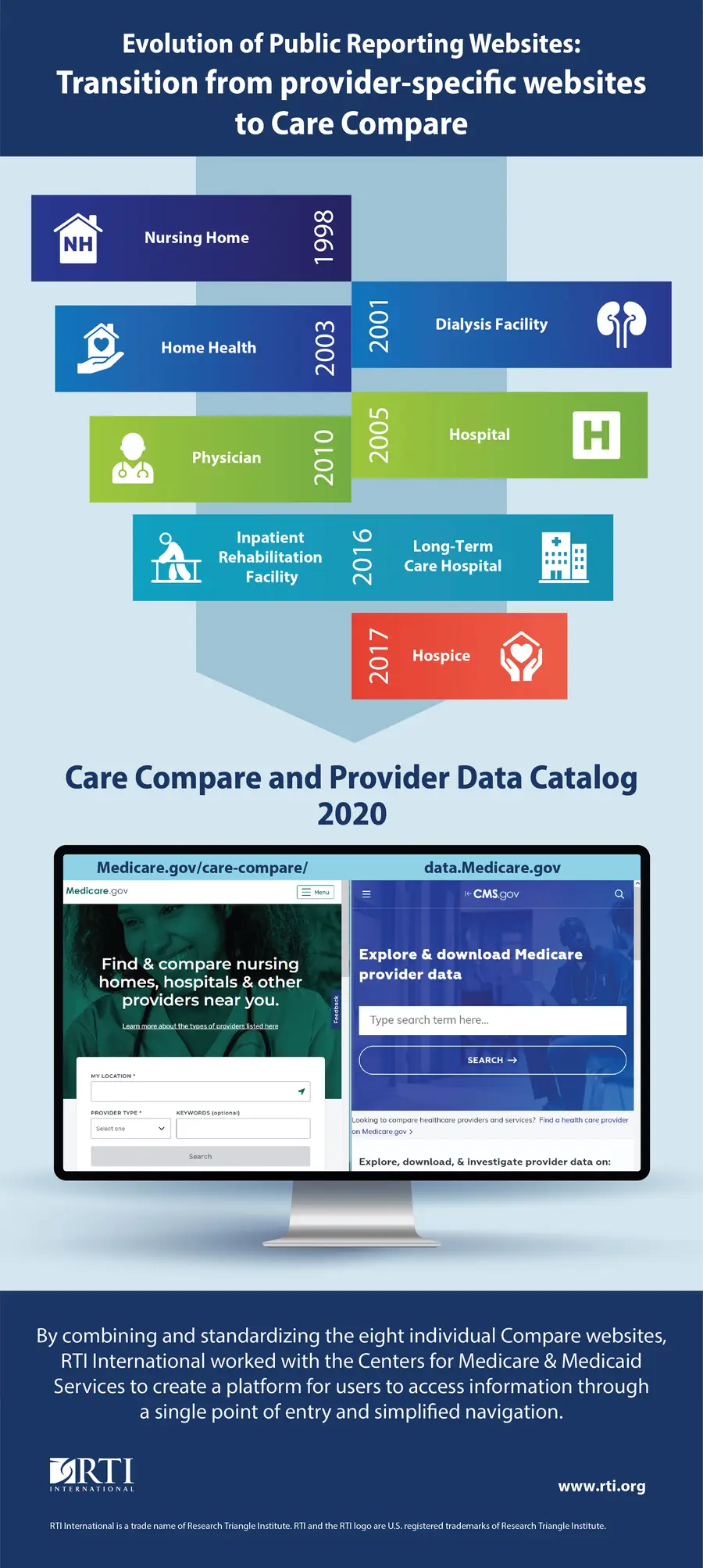A User-Friendly, Seamless Online Experience for Consumers and Stakeholders
Navigating the health care system can be challenging for consumers. The Centers for Medicare & Medicaid Services (CMS) makes the search for a health care provider or facility easier by operating websites that share data on quality and performance with the public. This practice is known as public reporting. Accessible public information helps Medicare consumers make informed decisions about where they receive their health care and incentivizes providers to improve their performance.
Using quality information that Medicare collects and reports regarding physicians, hospitals, nursing homes, and other health care providers and settings, CMS created a series of eight Compare websites: Dialysis Facility, Home Health, Hospice, Hospital, Nursing Home, Inpatient Rehabilitation Facility (IRF), Long-Term Care Hospital (LTCH), and Physician. The websites displayed information on these providers including performance on quality measures, star ratings, survey data, location details, ownership, and contact information.
In addition to the eight existing Compare websites, CMS also operated data.Medicare.gov. This website was geared more toward researchers, providers, and academic institutions. Through this tool, users were able to download the datasets produced from quality reporting programs.
In response to an increasingly tech-savvy beneficiary population, CMS launched the eMedicare Initiative in 2018. The goal of this initiative was to update CMS resources and websites to provide a “seamless online experience” to help consumers access health care data and make informed decisions. In January 2020, building on the eMedicare Initiative, CMS announced plans and partnered with RTI to consolidate the eight existing Compare sites and data.Medicare.gov into two redesigned websites: one designed for consumers, and one for researchers.

Leveraging our deep experience in health care transformation, along with our knowledge of health communication and consumer-friendly digital tools, RTI supported the September 2020 launch and ongoing maintenance of the new Care Compare and Provider Data Catalog (PDC) public reporting websites. We analyzed how caregivers and families, providers and provider associations, researchers, advocacy groups, and the media used the legacy public reporting websites and identified pain points to help create more user-friendly health care information access.
CMS used a human-centered design approach, ensuring that the new websites deliver “the right health care information to the right audience at the right time.” As the sites continue to attract users, RTI is helping CMS understand and meet the information needs of its constituents. We support ongoing efforts to enhance the user experience of these essential websites.
- Centers for Medicare & Medicaid Services (CMS)



